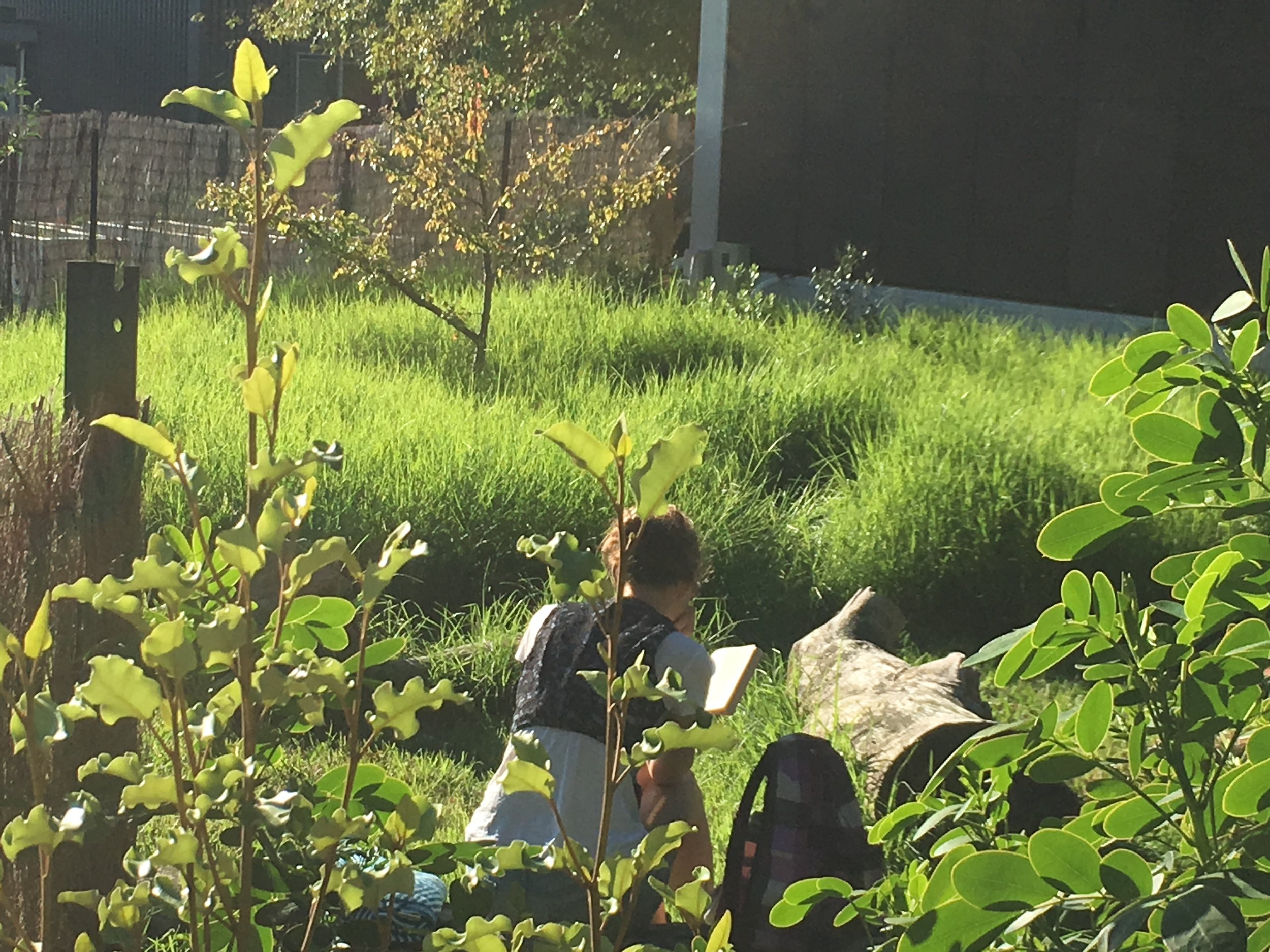Sensory gardens - and not missing out on opportunity
The survival of our planet, according to landscape designer Gayle Souter-Brown, rests with acknowledging our reliance on nature for ecosystem services, and our “giving back” to replenish what we take. Landscape architects are in a perfect position to advise on how to do that, she believes, but are in danger of missing the opportunity.
“Environmental engineers and urban ecologists are tooling up to meet the challenge,” Souter-Brown says. “(But) There is a risk that landscape architecture will be left behind if we do not play to our strengths – designing in the everyday experience of nature that people physiologically and psycho-socially need.”
Souter-Brown has created a sensory garden on site at Auckland University of Technology’s Northcote campus.
Souter-Brown is an expert in nature and the way people connect to it. She’s made a career out of studying it, travelling the world designing sensory gardens for people in need. Her projects include social housing, hospitals, schools and care homes - anyone who needs something extra from their landscape.
“The ‘extra’ is about functional outcomes,” she explains. “If it all comes back to a nature connection, which I believe it does for human health and wellbeing, it’s about how you facilitate that nature connection for users of the space. It’s about design detail for a particular outcome.”
Souter-Brown doesn’t hold a landscape architecture degree or qualification. She calls herself a landscape designer. But her experience and research on the connection between wellbeing and nature, has seen her invited on to the International Federation of Landscape Architects advisory circle. She speaks at international conferences on wellbeing related issues, and has, on several occasions, been invited by the World Health Organisation to share her knowledge. The author of the design text Landscape and Urban Design for Health and Well-being, she teaches landscape architecture at Unitec in Auckland and runs professional development workshops for Councils and LA practices.
The garden is a place to practice mindfulness.
“In Architecture, Frank Lloyd Wright is acknowledged as the greatest American architect of all time, but didn’t have an architecture degree,” Souter-Brown says.
In the UK the Landscape Institute is blurring the lines with garden designers, and acknowledges that many LA call themselves designers rather than architects as a point of difference. “Not being formally trained has given me the freedom to question, research and formulate my own theories, which in turn informs my practice.”
Souter-Brown runs her UK-based design business, Greenstone Design, from Auckland. “It works really well. While the UK team are sleeping I can be working on something and vice versa. It allows us to work globally, which we enjoy.”
AUT’s sensory garden has an orchard, perfect for reading.
The rest of her time is taken up with her PhD. “I’ve been practicing landscape design for almost 30 years as we moved around the world. At the start I was planning to do my Master’s in Landscape Architecture. But we were never anywhere long enough. So now I’m doing a PhD to formally test my ideas and put a structure around the measurement of the effect (of designed-in nature contact on well-being)”.
As part of that PhD she’s doing a stress response study, within a randomised control trial. She has two intervention sites at the Auckland University of Technology’s Northcote campus. One is a plaza, which is 60 percent paved with trees predominantly in straight lines and some seating. The other is an ecologically-rich sensory garden she designed and developed, with Rongoa, vegetables, berries, scented flowering plants, wildflowers, woodland and areas designed for quiet contemplation.
One zone has an “urban beach”
For the research to be useful to health practitioners as well as the design profession it was important to understand both physiological and psycho-social responses to design. Souter-Brown randomly divided the 165 study participants into three groups. One group spent 30 minutes a week outdoors (the internationally accepted minimum amount of time required for health and wellbeing) relaxing in her sensory garden. Another spent the same time relaxing in the plaza, and the third, the control group, continued with their normal outdoor activities such as pottering in the garden or walking the dog.
Levels of cortisol - our stress hormone - were checked before and after the intervention. Their sense of well-being was also measured.
“As you’d expect, the control group stayed about the same,” she says. “Over time the cortisol levels of people in the plaza group dropped about 6 percent. Meanwhile levels of those who had had the experience in the sensory garden dropped by almost 20 percent. Well-being was seen to significantly improve after experience of the sensory garden.
On the edge of the daphne walk
“We are restored by nature experience. When you have a screen in front of you for example, it requires directed attention, you have to engage with the screen, the flickering lights and moving images.
“Soft fascination occurs when you notice a tree wafting in the breeze or a bird flitting past your view. It doesn’t demand anything of you. That’s the restorative property.
Since starting her study Souter-Brown says new research has found we need a daily dose of nature. So for our health and well-being we need nature designed in to where we live, work, play and go to school.
And after she’s submitted her thesis, hopefully at the end of the year, she has a lofty goal for her research. She hopes that it will help the landscape architecture profession be recognised for the pivotal role it can play in saving the planet and improving our wellbeing.




